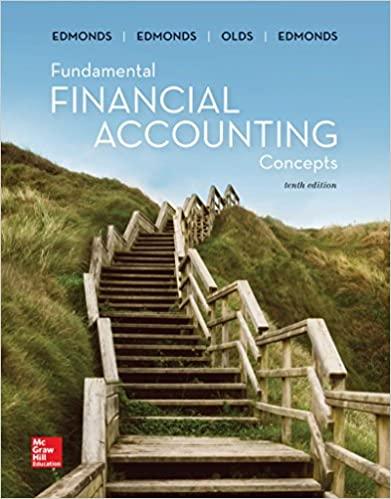Question
I am using McDonalds as my organization. Milestone 1 Organizational Context 1. What key features of the organization (e.g., major products or services, customers, location,
I am using McDonalds as my organization.
Milestone 1
Organizational Context 1. What key features of the organization (e.g., major products or services, customers, location, etc.) help set the boundaries for business decisions? In other words, what key goods or services does your organization provide, for whom, where, and why? 2. How is the company organized and managed (e.g., by product groups, geographic region, function, etc.)? How does that affect accounting and financial information and subsequent business decisions? B. Recent Financial Performance 1. Assess what the organization's consolidated income statements for the last three years say about its financial performance. Use relevant indicators, graphs, and spreadsheets to support your narrative. (Include all spreadsheets in an appendix.) For example, what do the amounts and year-to-year changes in revenue, operating income, net profit or loss, and Earnings Before Interest, Taxes, Depreciation, and Amortization tell you? Do any items stand out? 2. Assess what the organization's consolidated cash flow statements for the same time period say about its financial performance. Use relevant indicators, graphs, and spreadsheets to support your narrative. For example, what do the amounts and year-to-year changes in cash from operating activities, cash from investing, cash from financing, and total cash flow tell you? Do any items stand out? 3. Assess the organization's underlying financial performance. Support your answer with the analysis above and relevant research. For example, is recent performance substantially affected by unusual events such as a major acquisition or spin-off? Is the business thriving or struggling in its industry? How do you know? C. Current Financial Health 1. Assess how the organization is capitalized and what that tells you about its financial health. Support your response with relevant graphs, spreadsheets, and indicators such as "cash and cash equivalents," total debt, shareholders' equity, current ratio, debt/equity ratio, and Days Sales Outstanding (DSO). For example, does the organization have enough cash for payroll and other bills? Does it have the right mix of debt versus equity (stock)? How do you know? 2. Does the organization have the right amount of cash and other resources (e.g., key people, technologies, reputation, physical assets, etc.) to fuel future growth? What does this suggest for business decisions? For example, if it has too much cash, should it pay a large dividend, repurchase its own shares, or reinvest the excess funds? 3. Assess the financial value of the company using relevant indicators. What does your assessment imply for future business health and performance? For example, what is the business's current market value? What is its price-to-earnings ratio? What do these suggest about investor perceptions of the business's future?
Step by Step Solution
There are 3 Steps involved in it
Step: 1

Get Instant Access to Expert-Tailored Solutions
See step-by-step solutions with expert insights and AI powered tools for academic success
Step: 2

Step: 3

Ace Your Homework with AI
Get the answers you need in no time with our AI-driven, step-by-step assistance
Get Started


